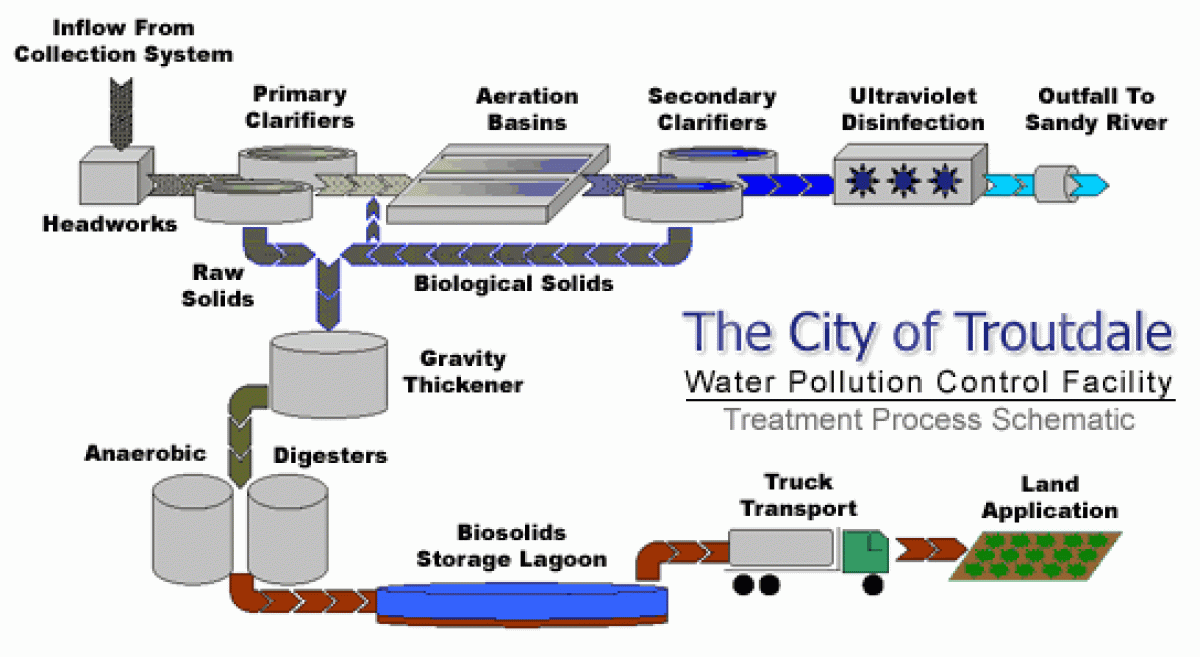
Water Pollution Control Facility
Troutdale's Water Pollution Control Facility (located on NW Graham Road) was placed in operation in November, 2001, following a 19-month construction period. The plant, constructed at a cost of $15.5 million, has an average dry weather capacity to treat 3 million gallons of sewage a day. This nearly doubles the capacity of the former plant which is no longer in operation. The new facility was designed by CH2M Hill and constructed by Williams Bros Construction of Spokane.
How Does It Work?
Read about a component (right) in the treatment process to learn more about it.
Headworks
A building of approximately 1,200 square feet in which raw sewage is received and passed through screens to remove large particulates, grit, and debris.
Primary Clarifiers
Two in-ground, circular concrete units, each approximately 45 feet in diameter and 12 feet deep, which receive raw sewage from the headworks and remove some suspended solids and suspended organic particles by settling action.
Aeration Basins
Two rectangular concrete units, each approximately 225 feet long, 26 feet wide, and 16 feet deep, which receive sewage from the primary clarifiers and allow dissolved organic matter to interact with bacteria in an oxygen-rich environment, converting the organic matter into suspended solids that will settle out in the secondary clarifiers.
Secondary Clarifiers
Two in-ground, circular concrete units, each approximately 76 feet in diameter and 16 feet deep, which receive partially treated sewage from the aeration basins and further remove solids through settling.
Ultra-Violet Light Disinfection System
A medium pressure high intensity ultra-violet light system, consisting of 40 UV lamps, which receives treated effluent (liquid) from the secondary clarifiers and destroys disease-causing micro-organisms.
Outfall
A location on the Sandy River just north of Interstate 84 in which treated and disinfected aqueous effluent from the ultra-violet light disinfection system is discharged in accordance with a permit issued to the City by the Oregon Department of Environmental Quality.
Gravity Thickener
One circular concrete unit, approximately 36 feet in diameter and 10 feet deep, which receives biological solids settled out from the clarifiers and reduces the liquid content before it goes to the digesters.
Digester
Two circular concrete units, approximately 40 feet in diameter and 47 feet in height, which receive biological solids from the gravity thickener and biologically break them down in a heated and oxygen limited environment to render them stable.
Lagoon
One earthen basin lined with an impervious membrane, approximately 560 feet long, 225 feet wide, and 7.5 feet deep, which receives treated and stabilized biological solids from the digesters and stores them until they can be trucked for land-application to agricultural fields in accordance with rules established by the Oregon Department of Environmental Quality.
